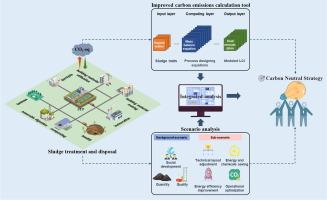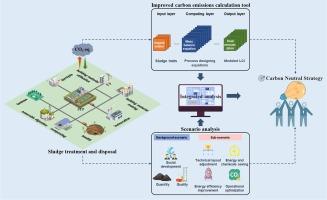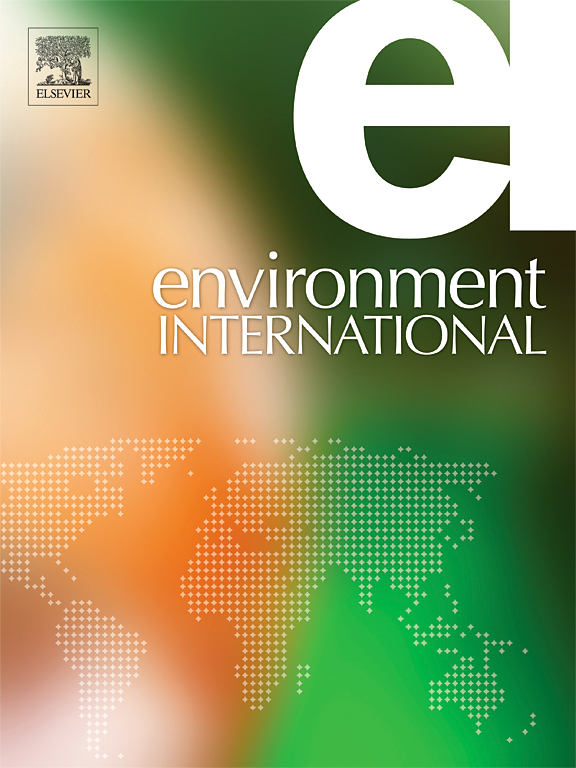污泥处理中的战略性碳排放评估:低碳转型的动态工具
IF 10.3
1区 环境科学与生态学
Q1 ENVIRONMENTAL SCIENCES
引用次数: 0
摘要
碳中和目标对污水污泥处理和处置(SSTD)行业提出了重大挑战,需要制定低碳转型的战略规划。然而,支持这一目标的灵活而全面的碳排放分析工具仍然缺乏。本研究提出了一种碳排放分析工具,用于评估 SSTD 的碳排放特征和未来减排潜力。该工具整合了基于生命周期清单(LCI)建模的分析、敏感性分析、回归分析和情景分析。碳排放量根据污泥特性、技术水平和行业外部参数进行动态计算,为因地制宜地进行评估奠定了基础。该框架考虑了行业内外多参数、多角度场景设计变化的潜在影响,实现了动态、全面的模拟。在中国武汉进行的一项案例研究展示了该框架的可用性和应用流程。研究结果表明,如果不采取干预措施,预计从 2021 年到 2060 年,SSTD 的碳排放量将增加一倍以上。在减排措施中,能源和化学品节约将产生最大的减排潜力,其次是技术布局调整和提高能效。污泥行业内外的运营优化贡献最小。采用所有减排措施后,2060 年的排放量可降至-82.91 kt CO2-eq,相当于对污水处理线排放量 13.03% 的补偿。在所有工艺中,焚烧工艺因其当前和未来的低碳排放量而受到推荐。厌氧消化和土地利用的合作资源路线也很有前景,因为随着污泥中有机物和营养物含量的增加,该路线也逐渐显示出优越性能。不同路线的关键因素、子过程和排放类型均已确定,并可进行相应优化。所开发的方法具有足够的灵活性,可应用于其他城市和更大规模的地区,从而为 SSTD 实现碳中和运行提供技术和战略支持。本文章由计算机程序翻译,如有差异,请以英文原文为准。


Strategic carbon emission assessment in sludge treatment: A dynamic tool for low-carbon transformation
The carbon–neutral target presents a significant challenge for the sewage sludge treatment and disposal (SSTD) industry, necessitating strategic planning for a low-carbon transition. However, flexible and comprehensive carbon emission analysis tools to support this goal remain lacking. This study presents a carbon emission analysis tool to evaluate the carbon emission characteristics and future mitigation potentials of SSTD. The tool integrates life cycle inventory (LCI) modeling-based analysis, sensitivity analysis, regression analysis, and scenario analysis. Carbon emissions are dynamically calculated based on sludge properties, technological level, and industry external parameters, providing a foundation for adaptable evaluation tailored to local conditions. The framework considers the potential effects of multi-parameter and multi-aspect changes in scene design, both within and outside the industry, to achieve dynamic and comprehensive simulations. A case study conducted in Wuhan, China, demonstrated the usability and application processes of the framework. The results indicated that carbon emissions from SSTD are projected to more than double from 2021 to 2060 without interventions. Among the mitigation measures, energy and chemical savings would yield the largest reduction potential, followed by the technical layout adjustment and the promotion of energy efficiency. Operational optimization in the sludge industry and outside the industry would contribute the least. With all mitigation measures applied, emissions could decrease to –82.91 kt CO2-eq in 2060, equivalent to 13.03% compensation for emissions from the sewage treatment line. Among all the processes, incineration routes are recommended due to their current and future low carbon emissions. The cooperative resource route of anaerobic digestion and land use also shows promise as it progressively demonstrates superior performance with increasing organic matter and nutrient content of sludge. Critical factors, sub-processes, and emission types for different routes were identified and can be optimized accordingly. The developed method demonstrates sufficient flexibility to be applied to other cities and larger-scale regions, thereby offering technical and strategic support for SSTD towards carbon–neutral operation.
求助全文
通过发布文献求助,成功后即可免费获取论文全文。
去求助
来源期刊

Environment International
环境科学-环境科学
CiteScore
21.90
自引率
3.40%
发文量
734
审稿时长
2.8 months
期刊介绍:
Environmental Health publishes manuscripts focusing on critical aspects of environmental and occupational medicine, including studies in toxicology and epidemiology, to illuminate the human health implications of exposure to environmental hazards. The journal adopts an open-access model and practices open peer review.
It caters to scientists and practitioners across all environmental science domains, directly or indirectly impacting human health and well-being. With a commitment to enhancing the prevention of environmentally-related health risks, Environmental Health serves as a public health journal for the community and scientists engaged in matters of public health significance concerning the environment.
 求助内容:
求助内容: 应助结果提醒方式:
应助结果提醒方式:


